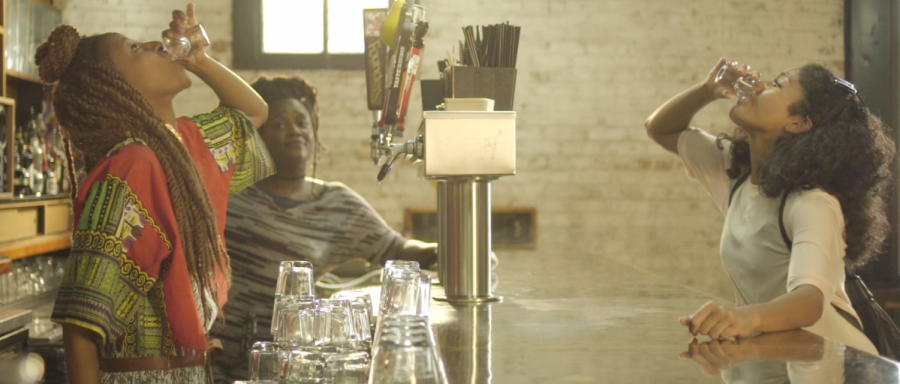Local web series to depict needed representation, friendship
February 6, 2017
To combat media’s historically heavy focus on straight, white characters, the creators of the “Brown Girls” web series say they aim to bring humorous and touching stories of friendship told by women, people of color and queer people to the screen.
Premiering on Open TV (beta) Feb. 15, the Chicago-based web series explores the lives of two friends living in the Pilsen neighborhood, weathering relationships and mishaps, according to director Sam Bailey.
“It’s really hard to navigate your life, especially in your twenties,” Bailey said. “It’s important that we did a show that is not like the narrative of every of color, queer person or female narrative.”
With an all-female cast and crew including people of color and those who identify as queer, the show will hopefully provide the representation not typically seen in TV, Bailey said.
“Those people—[women, people of color and queer people]—have this innate buy-in to our story because they know it so intimately,” Bailey said. “It changes the lens in which we get to see the series and tell these character’s stories.”
Bailey and series writer Fatimah Asghar, , said they used their own experiences to create the show, basing the two main characters on the friendship between Asghar and musician Jamila Woods.
Woods, the music consultant, said the music she selected for the series was inspired by the different types of love depicted in the show—focusing on the love friends show to one another.
“What this show really showcases is a strong, friendship love or sisterhood love that doesn’t often get to be the focus of a show,” Woods said.
Bailey added that the creators tried to embrace their Chicago roots by emphasizing the city’s tight knit but little-acknowledged artistic community.
“We talked about making this series feel really Chicago and texturized with characters that seem like we would kick it with,” Bailey said. “A lot of it was sharing art we were being inspired by and building it up from the ground that way.”
Bailey said she cast actors from marginalized communities and allowed them to contribute their own stories to create a narrative outside of the stereotypical queer storylines. This representation of marginalized groups is powerful because it validates the lives of people who never see their stories on screen, she added.
Open TV (beta) chose to distribute “Brown Girls” because of the diversity and the inspiration it provides viewers, said platform founder Aymar Jean Christian in a Jan. 23 emailed statement.
“The country is hungry for stories that render the lives of diverse people [that are] more complex,” Christian said. “[Stories] that honor connections to our families, histories, cultures and politics.”
Victoria Shannon, an adjunct professor at DePaul University and a former Columbia professor who taught gay and lesbian studies courses, said true representation, like what “Brown Girls” is trying to accomplish, has met with little progress in the past years.
With recent politics in mind, Shannon said media portrayals will be put on the back burner and minority groups will instead be fighting for rights.
“I’ve seen attempts being rather lame and not a lot of energy behind them,” Shannon said. “The media’s still hung up on stereotypes.”
Woods, in contrast, said she sees a move toward greater representation happening with shows such as “Awkward Black Girl” or “Atlanta” that go outside of stereotypical roles of women, people or color, or queer people. Even with small, grassroots shows such as “Brown Girls,” people are already saying they see themselves in the short trailers, she said.
“I hope they have something that feels reflective of real people—people they might know or people they have never imagined existed,” Woods said. “Just [to] have that feeling, that peek into someone’s life, whether you can relate to it or not is a very powerful experience.”
While there is still room for improvement in representation of minority groups, Bailey said she remains cautious, but hopeful. She said who is telling the stories, as well as the stories themselves, needs to be a point of interest. With “Brown Girls,” hopefully this narrative will be heard, Bailey added.
“It’s powerful to see your experiences on camera,” Bailey said. “If you are going through your life, and you never see anyone that looks like you or shares your kind of backstory, it’s hard to navigate.”








